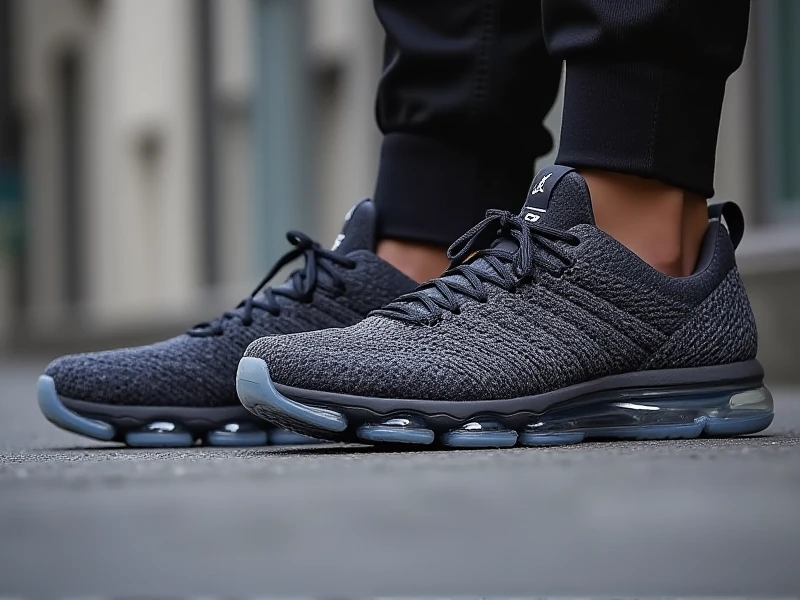Ultimate Guide: Choosing the Best Men's Sports Shoes for Performance & Comfort

Finding the perfect pair of men's sports shoes is essential for both athletic performance and everyday wear. Whether you're hitting the gym, running miles, or simply wanting comfortable casual footwear, the right athletic shoes make all the difference. This guide explores key factors to consider when shopping for men's athletic footwear.
Prioritize Your Activity:
The most crucial step is identifying your primary use. Are you a dedicated runner, a gym enthusiast, or someone seeking versatile shoes for walking and casual outings?
- Running Shoes: Designed for forward motion, they offer superior cushioning (especially heel-to-toe transition) and support for repetitive impact. Look for models specific to road running, trail running, or neutral/pronation control.
- Training/Cross-Training Shoes: Built for lateral movements, agility drills, weightlifting, and varied gym workouts. They provide stability, a firmer base for lifting, and flexibility for multi-directional motion.
- Walking Shoes: Focus on cushioning, comfort for extended periods, and moderate support. Often lighter than dedicated runners.
- Court Shoes (Basketball, Tennis, Volleyball): Offer excellent ankle support (especially high-tops for basketball), exceptional grip/traction patterns for quick stops and starts, and durability for indoor/outdoor courts.
- Lifestyle/Athleisure Sport Shoes: Blend athletic aesthetics with casual comfort. Often inspired by performance models but prioritize style for non-athletic wear.
Fit: The Non-Negotiable Factor
A perfect fit is paramount. Ill-fitting men's sports shoes lead to blisters, discomfort, and potential injury.
- Try them on in the afternoon: Feet naturally swell during the day.
- Wear appropriate socks: Use the type of athletic socks you'd typically wear.
- Check length and width: There should be about a thumb's width (roughly half an inch) of space between your longest toe and the shoe's end. Your foot shouldn't feel squeezed widthwise. Brands vary, so don’t assume your size is universal.
- Heel security: Your heel should sit snugly without slippage.
- Midfoot comfort: The shoe should hold your midfoot securely without pinching.
- Forefoot flexibility: Ensure you can move your toes naturally.
- Walk and/or jog: Test them thoroughly in-store if possible.
Cushioning vs. Support:
Understanding your individual needs is key:
- Cushioning: Absorbs impact shock. Crucial for runners absorbing high-impact forces, or those preferring a softer, more plush feel. Not ideal for heavy lifting needing stability.
- Support/Stability: Controls inward rolling (overpronation) of the foot. Ideal if your ankles tend to roll inwards. Stability shoes often have firmer medial posts.
- Neutral: Suitable for runners with efficient strides (neutral pronation) who primarily need cushioning. The most common type.
- Motion Control: Maximum support for severe overpronation.
Materials Matter:
- Uppers: Modern athletic shoes use engineered meshes for breathability and lightweight comfort. Knit uppers provide flexibility and sock-like fit. Synthetics offer support and structure. Leathers offer durability but less breathability.
- Midsoles: Typically EVA foam, PU foam, or proprietary technologies (Nike Air, Adidas Boost, ASICS GEL) provide the core cushioning and support. Responsive foam returns energy.
- Outsoles: Durable rubber with specific tread patterns designed for traction on road, track, trail, or court surfaces is crucial for grip and safety.
Durability & Replacement:
Rotate between pairs if possible. High-quality men's sports shoes, even with heavy use, generally last around 300-500 miles of running or 6-12 months of frequent training. Worn-out cushioning leads to aches. Pay attention to sole wear, loss of support, and any developing discomfort.
Style Integration (Athleisure):
Modern men's athletic footwear is a style statement. Clean running models, classic basketball high-tops, and sleek trainers seamlessly transition from workouts to weekends. Consider colors and designs that complement your casual wardrobe. Brands constantly update collections to merge performance with style.
Conclusion:
Choosing the best men's sports shoes requires considering your activity, prioritizing a perfect fit, understanding your cushioning/support requirements, and selecting quality materials. By focusing on performance features first, the style will naturally follow. Investing time in finding the right athletic footwear pays dividends in comfort, injury prevention, and peak performance during your workouts and daily life. Visit reputable sports retailers or explore trusted online specialists specializing in athletic footwear for men to find your perfect match.